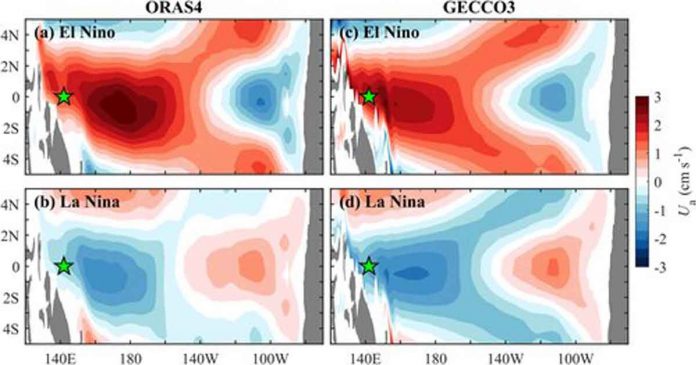The equatorial intermediate currents (EICs) contribute to global circulation, climate variability, distributions of heat, water mass and biogeochemical quantities.
The EICs in the western Pacific show a significant interannual response to El Niño-Southern Oscillation (ENSO) at a 10- to 12- month lag with an eastward transport anomaly (Tra) during the El Niño events.
Institute of Oceanology of the Chinese Academy of Sciences (IOCAS) scientists have documented the intraseasonal, seasonal, and interannual variability of the EICs in the western Pacific. They revealed that the El Niño-related eastward Tra can be modulated by the Pacific Decadal Oscillation (PDO).
The study was published in Geophysical Research Letters.
Scientists ascertained that the PDO modulation effects were embodied in two aspects, based on the results from two long-record reanalysis products. The magnitude of the maximum eastward Tra during the warm PDO-El Niño was nearly twice as large as that during the cold PDO-El Niño. The occurrence time of the largest eastward Tra for warm PDO-El Niño leaded that for cold PDO-El Niño by about two months.
Scientists further performed model experiments to explore the underlying mechanism. The above modulation was closely related to the wind forcing in the equatorial central Pacific. The enhanced and eastward-displaced anomalous westerly winds could induce the Kelvin waves with an intensified amplitude and eastward shift. These eastward propagating waves were reflected into Rossby waves at the Pacific eastern boundary. The westward and downward propagation of such Rossby waves induced the larger and earlier peaked eastward Tra.

